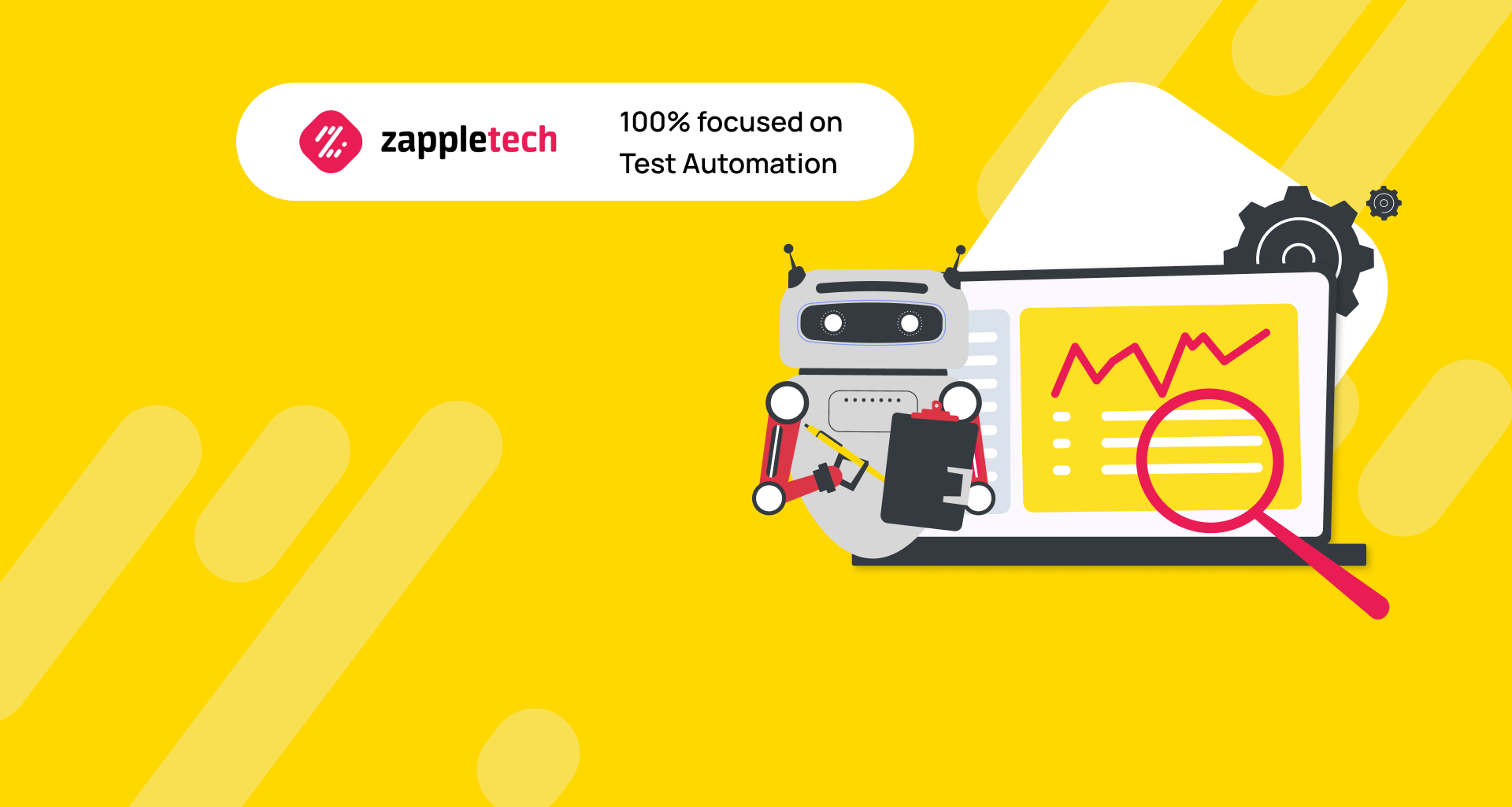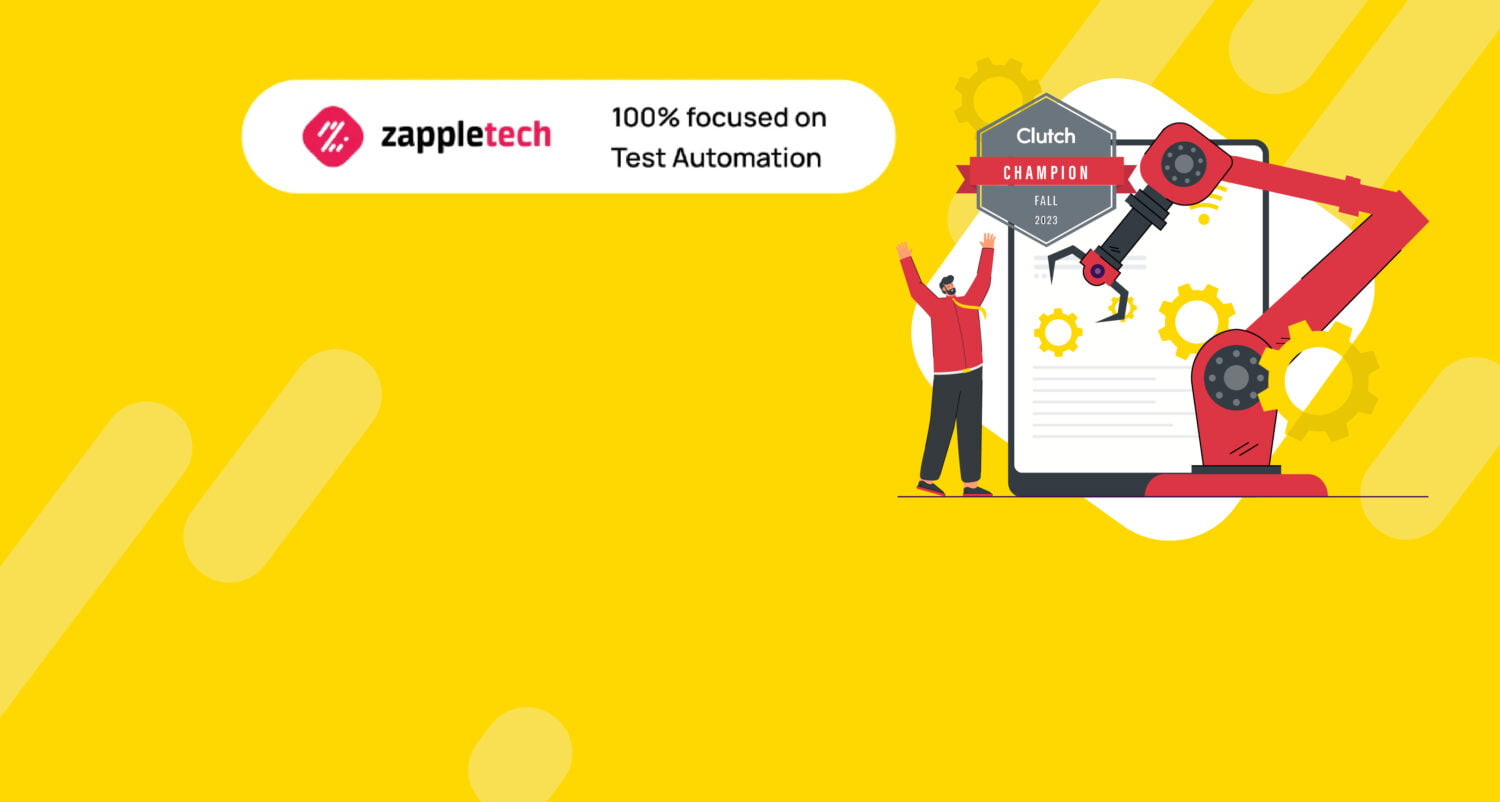Risk is an essential part of any job, and despite our best efforts to mitigate them, risks in software testing are inevitable. These risks can manifest in various ways, such as a user reporting a bug that was not detected by the autotests. This scenario is all too common and can occur even when you believe that everything has been thoroughly planned and there’s nothing to worry about.
However, outraged users are just the tip of the iceberg. The true cost of poor testing practices can be staggering. Not only do bugs impact the user experience, but they can also be incredibly expensive to address. It’s important to note that software testing can consume 25-90% of the overall project budget, and if risks in software testing aren’t properly managed, businesses may find themselves forced to allocate additional funds for unplanned bug fixes.
Given the significant impact that risks in software testing can have, it’s crucial to focus on effective risk management strategies. This involves careful planning and the development of a solid testing strategy that accounts for potential risks. By doing so, you can not only minimize the likelihood of encountering these risks but also ensure that your testing processes are more efficient and cost-effective.
Focus on automating the most critical and frequently used features first to ensure maximum test coverage, reducing the likelihood of overlooking important areas.Mykhailo PoliarushCEO, ZappleTech Inc.
Table of Contents
Risk: Definition and Types in Software Testing
In the realm of project management, defining risk can be quite nuanced. According to the PMBOK (Project Management Body of Knowledge), risk is described as “an uncertain event or condition that, if it occurs, affects the objectives of the project, such as content, schedule, cost, and quality, negatively or positively.” This definition highlights that risks are not inherently negative; they can have positive outcomes as well.
However, when we discuss risks in software testing, the focus usually leans towards the negative implications. Risks in software testing often involve potential issues that could disrupt the testing process or degrade the overall quality of the software. These risks can manifest in various ways, such as extending the time required for testing, deteriorating the software’s quality, inflating project costs, altering deadlines, or even damaging the product’s reputation.
For instance, a common risk in software testing is the possibility of missing critical defects due to inadequate test coverage. This oversight can lead to severe consequences once the software is released to the market. Similarly, delays in testing due to unforeseen technical challenges can push back the entire project timeline, affecting the delivery schedule and possibly leading to increased costs.
Moreover, poorly managed risks in software testing can also harm the reputation of the product and the company. If a software product is released with significant defects, it can result in negative user experiences, leading to loss of customer trust and revenue. Therefore, identifying, assessing, and mitigating risks in software testing is crucial for ensuring the successful completion of a project.
So let’s look at the most significant types of risk in software testing:
- Automated tests are short-sighted. That means that all that they do is act according to their script only. Simply put, they only do what they are programmed to do. This means that it will not notice an error that its script does not anticipate.
- It involves high costs. So, first, you pay to invest in this tool, and only then do you look at the payback.
- It is not always suitable. These are usability, layout and translation checking, installation testing, and similar areas.
- It breaks easily. Sometimes even minor changes in the code lead to long fixing and updating.
- It requires constant support. The more new autotests appear, the more time you need to update them.
In the end, we must admit that it is impossible to find all defects, even with test automation.
Risks Management Principles
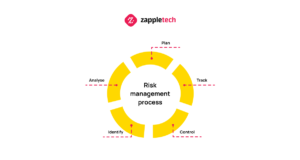
When it comes to managing risks in software testing, it’s essential to understand that the process involves significant effort from the start and requires ongoing updates as the project evolves. Risks in software testing can vary greatly depending on the size and specific needs of the project, meaning there’s no one-size-fits-all solution.
At its core, risk management allows for better control over resource allocation, which ultimately translates to saving both time and money for the customer. In software testing, risk management is a multi-stage process that begins with identifying potential risks, assessing their impact, and then implementing strategies to mitigate these risks. Each stage is crucial in ensuring that risks in software testing are minimized, leading to a smoother and more efficient testing process.
The principles of risk management in this context emphasize the importance of proactive planning and continuous monitoring. By diligently managing risks in software testing, teams can anticipate potential issues before they become critical, ensuring that the testing process remains on track and within budget. This approach not only protects the quality of the software but also fosters trust with clients by demonstrating a commitment to delivering a reliable product.
Stage 1: Planning the Testing Process
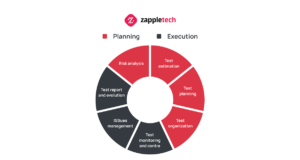
You cannot build a successful project without well-thought-out and clear documentation. The documentation plays a crucial role in defining effective communication, planning, and the overall software testing process. It serves as a roadmap that guides the team through each phase, ensuring that everyone is on the same page.
During this stage, it’s essential to consider the potential risks in software testing. Identifying these risks early on can prevent costly issues later in the project. There are several important document types to focus on, including the test plan, which outlines the testing scope, objectives, resources, schedule, and activities. This document is vital for anticipating risks in software testing and ensuring that the team is prepared to address any challenges that may arise.
Another critical document is the test strategy, which provides a high-level overview of the testing approach and methodologies. This strategy helps in identifying specific risks in software testing and planning mitigation strategies accordingly. Additionally, requirement specifications and design documents are also key components that must be thoroughly reviewed and documented during the planning stage to minimize risks and ensure a smooth testing process.
Testing Policy
This is the highest document created by management and defines the organizational points in risk management. It prescribes factors such as:
Testing objectives.
- Basic terms and concepts of testing.
- Documentation to support test processes.
- Metrics for defining process testing.
- Possible solutions to problems.
- General standards and test criteria.
Testing Strategy
Typically, such a document is created by business analysts or project managers.
It includes items such as:
- Testing volumes.
- Industry standards.
- Test execution schedule.
- Deadlines.
- Risk identification.
- Status reports.
Essentially, this document defines the basic testing parameters: what we should test, what part of the product, when it should be started, and other parameters of the risk management in software testing.
Testing Plan
A testing plan is a critical document in the software development lifecycle, detailing the technical aspects of the testing process and guiding the performers through each phase. Unlike broader topics such as politics or strategy, the testing plan focuses specifically on the technical execution of tests, ensuring that every detail is meticulously planned and followed.
Integrate automated tests into your CI/CD pipeline to catch issues early in the development process, minimizing the risk of defects going unnoticed until later stages.Sergey AlmyashevCOO, ZappleTech Inc.
One of the key functions of a well-crafted testing plan is its role in controlling and mitigating risks in software testing. By clearly outlining the steps, methodologies, and tools to be used, this document helps prevent potential issues from arising during the testing phase. Managing these risks in software testing is essential to maintaining the integrity and quality of the final product.
The responsibility for drafting this crucial document typically falls to the quality control manager. They must ensure that the testing plan is comprehensive, addressing all possible risks in software testing and providing clear instructions for implementation. This careful planning is vital for the success of the project, as it lays the foundation for a smooth and effective testing process.
It will help control all testing processes and includes:
- Schedule.
- Introduction.
- Knowledge Test.
- Functions that should and shouldn’t be tested.
- Result.
- Duties.
- Assertions.
- Risks.
- Strategy.
The quality of these documents determines the quality of the testing strategy and the avoidance of risks in software testing.
Stage 2: Create a Proper Team
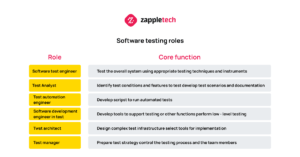
After determining the necessary parameters and tasks that autotests must perform and identifying all the risks and plans, the next crucial step is to create a proper team. This team will be responsible for executing the tests and managing any challenges that may arise, including risks in software testing.
To ensure success, it’s essential to define clear roles and responsibilities for each team member. For instance, you need to assign who will write the tests, who will review them, and who will handle the automation tools. Proper role definition helps in mitigating risks in software testing by ensuring that every aspect of the testing process is covered and that nothing falls through the cracks.
Additionally, providing your team with the necessary resources, such as tools, training, and access to documentation, is vital for minimizing potential risks in software testing. When a well-prepared team works together with clear objectives and adequate resources, the chances of encountering significant issues during the testing process are significantly reduced.
Consider that effective QA has six main roles:
- Test analyst.
- Test architect.
- Test automation engineer.
- Test manager.
- Software development engineer in test.
- Software test engineer.
Each team member performs specific tasks, and the more effectively they interact, the more chances of avoiding risks in software testing.
Remember that automatic testing cannot replace specialists in any way. It needs control and correction by a competent specialist. Therefore, it is not enough just to assemble a team. It should develop in knowledge and skills and business training, exercises, brainstorming. This approach will develop your team of testers, and they will be able not only to work more efficiently but also to solve urgent problems.
Stage 3: Use the Right Metrics
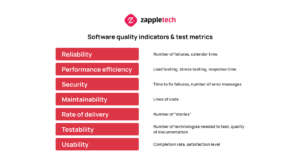
Effective risk management in software testing also involves paying close attention to metrics. These metrics play a crucial role in determining the effectiveness of testing and its accuracy. By carefully selecting and analyzing the appropriate metrics, teams can identify potential risks in software testing and ensure that the testing process is both thorough and reliable. Metrics not only help in measuring the success of the tests but also in highlighting areas where risks might arise, allowing teams to address them proactively.
For example, the CISQ Software Quality Model has identified several critical metrics:
- Reliability.
- Performance Efficiency.
- Security.
- Maintainability.
- Rate of delivery.
Also, the model can be extended to include assessments of testability and usability of the product. This will boost the software testing accuracy and quality, minimizing test risks.
Stage 4: Analysis
Check and analyze all factors of your testing software:
- Technical documentation.
- Execution of protocols.
- Compliance with conditions and tools.
- The skill level of your team.
- Performance reporting and identifying the bugs.
You have to make sure that your team has taken enough tools to mitigate risk and risk management. It is even critical to get your company into the lead and ensure the success of your products.
